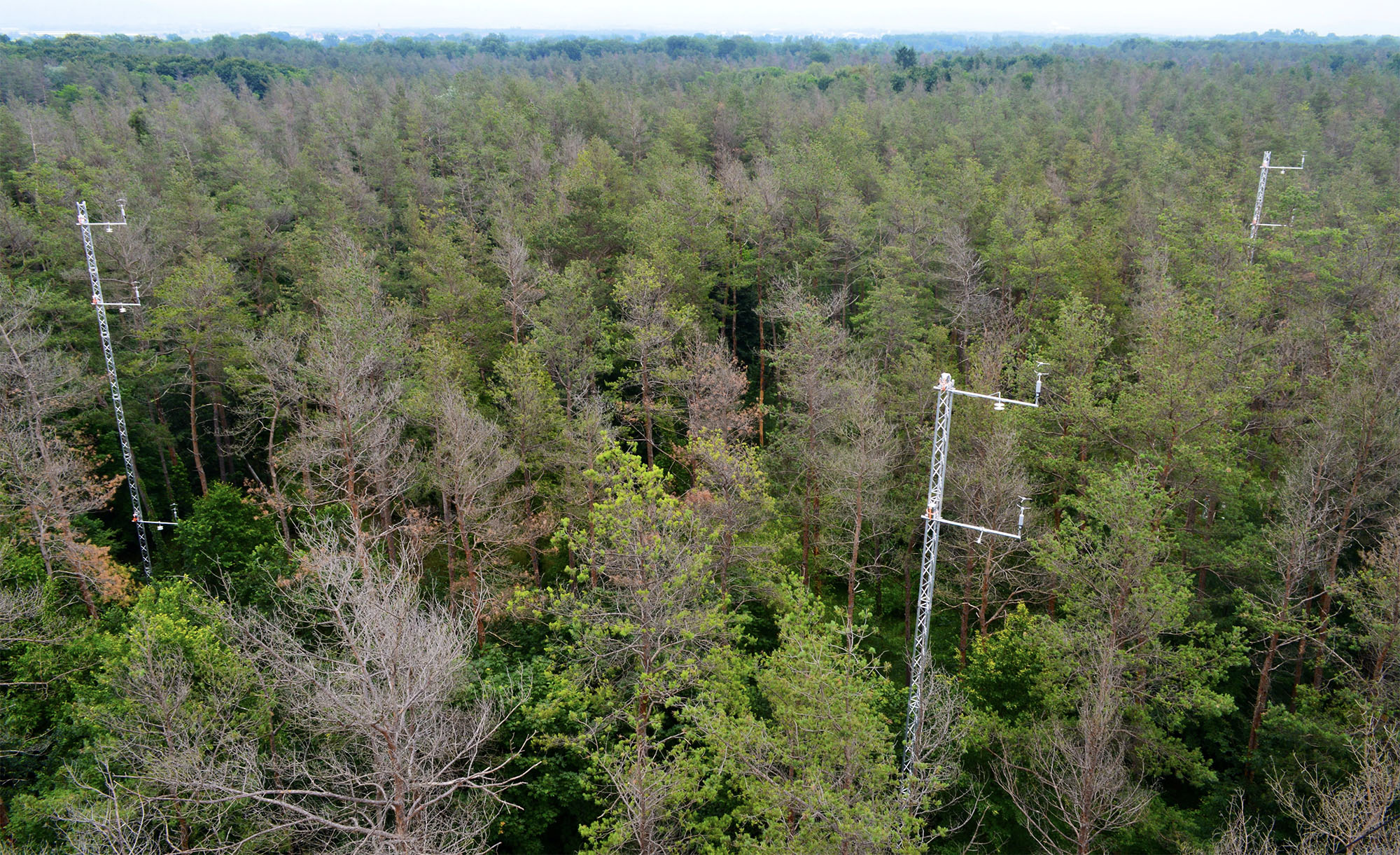Pressure pumping and methane oxidation in soils
The project "Do wind-induced pressure fluctuations contribute to methane oxidation in aerated soils?" funded by the German Research Foundation (DFG, 2019-2022) investigates the interactions between atmospheric flow and the gas exchange of methane in soils.
Gas exchange in the atmosphere takes place primarily by means of turbulent and laminar flow. In contrary, in the soil diffusion is the dominant process and advective transport plays a minor role. Despite the fundamental differences and the apparent independence of these processes, increases in gas transport rates in the ground by several 10% during periods of strong winds have been observed in field studies. This effect is due to wind-induced pressure fluctuations that propagate into the air-filled pore system of the soil and lead to minimally oscillating air mass flow. Due to the oscillating nature of the air flow, the direct contribution to gas transport is very small. The associated dispersion, however, leads to an increase in the transport rate opposed to the direction of the concentration gradient. This pressure pumping (PP) effect, if not taken into account, can lead to uncertainties and errors when determining gas fluxes using the gradient method and chamber methods. This uncertainty poses a problem for long-term monitoring of greenhouse gas fluxes, since periods with strong winds also have to be recorded.

Measuring towers for recording the spatial coherence of pressure and wind fields at the Hartheim forest meteorological measuring station of the University of Freiburg (Photo: A. Christen).
We hypothesize that PP effects are more pronounced in well-ventilated soils. We test this hypothesis in field studies at four different locations (2 x forest, pasture, maize field) and repetition with different soil moisture. To do this, we will continuously feed a tracer gas into the soil in order to be able to determine the effective transport rate. The PP effect is also to be examined on soil samples in the laboratory under standardized conditions.
Another aim is to investigate the role of the structure of the plant stand for the spatial variability of pressure fluctuations. For this purpose, we will record the wind movement in and above the vegetation as well as the high-frequency pressure fluctuations on the soil surface and in the soil. This will make it possible to detect air movement, pressure fluctuations and their propagation into the ground. In this way, the observed "acceleration" of the transport rate can be directly related to the pressure fluctuations.
The natural pressure fluctuations are partially excluded or weakened during chamber measurements through the chamber. We therefore hypothesize that the exclusion of pressure fluctuations leads to an underestimation of the undisturbed surface efflux through chamber measurements. Our aim is to develop correction factors for chamber measurements in order to compensate for methodical measurement errors
A better process understanding for this to-date poorly investigated effect would help to increase the reliability and precision of measurements of soil gas flows, which forms the basis for further research.

